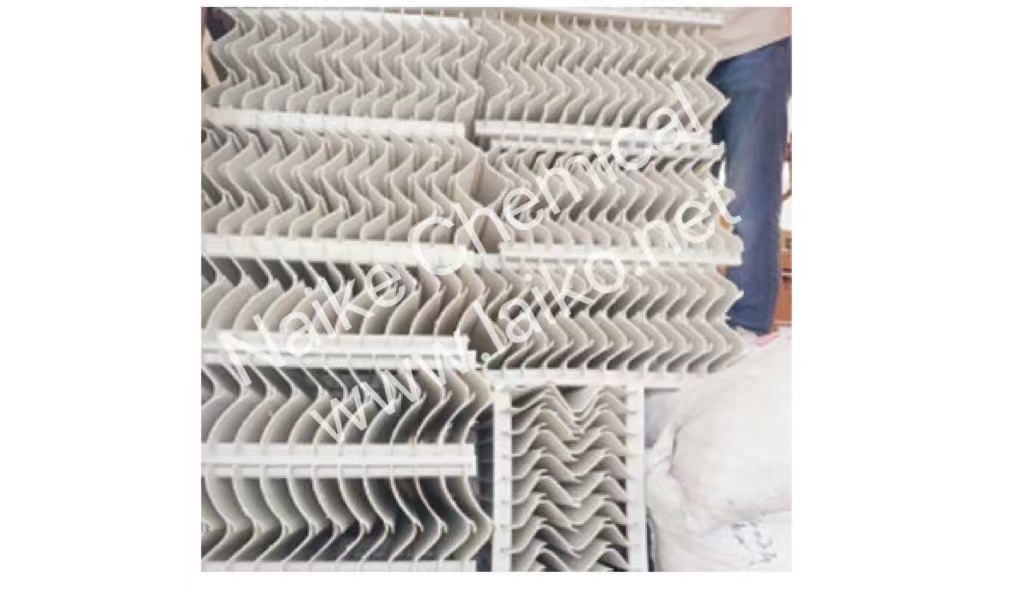Introduction of Vane Type Demister

What is Vane Type Demister?
The vane type demister also called herringbone mist eliminator. Consists of a number of serrated herringbone blades with a certain spacing. The blade profile can be smooth or with hooking. Smooth blades are often used for non-scaling service, while hooked blades can provide greater removal efficiency and capacity.In the same environment where small solid particles are present, blade mist eliminator pads are a better choice for liquid and gas separators than wire mesh mist eliminator pads.
In terms of operating principle, vane type demister differ from wire mesh type demister. The discharge of liquid from a vane type demister occurs outside the gas stream.Vane type demisters are widely used to separate entrained liquid droplets of 8 μm or larger from the gas stream. As the gas stream passes through the vane type demister and changes direction, the droplets are not in a position to change direction as quickly as the gas due to their momentum. As a result, droplets hit the herringbone vanes and then agglomerate and form large droplets until they are discharged.
Types of Vane Type Demister
First of all, are divided into metal vane type demisters and plastic vane type demisters according to the material. Metal vane type demisters are made of stainless steel, carbon steel and other alloy steel, which have better corrosion resistance and rust resistance than plastic ones. Plastic vane type demisters are light in weight but have high filtration efficiency and are employed for gas and liquid separation.
Second, depending on the type of blade, vane type demisters can be shiny blades for fouling-free service, and they can also be hooked blades to provide greater removal efficiency and capacity.
Once again, since have different channels, they can usually be separated into two channels and three channels. The number of channels corresponds to the number of times the airflow changes direction. The more channels there are, the higher the separation efficiency. In addition, vane type demisters can be separated into streamline and broken line types.
Finally, being dependent on the shape, the vane type demisters can be made into different shapes, such as circles and rectangles. In addition, it can be formed in one body and can be separated into several parts for easy transport and installation.

How do Vane Type Demisters Work?
are devices used to remove entrained fog from a gas or vapour stream by converting the fog into larger droplets that are too heavy to be carried by the gas or vapour stream. Vane type demisters typically work by obstructing their path to merge smaller droplets. It brings on by using a composite mesh or vane plate surface to separate the droplets from the gas stream by mechanical and inertial impacts. The huge surface area combined with the small volume allows the collection of liquid without significantly impeding the flow of gas. Some composite mesh vane type demisters can be used as post-control acid mist eliminators on wet scrubbers.

Applications of Vane Type Demister
Vane type demisters are used in a wide range of applications including refineries, chemicals, petrochemicals, pharmaceuticals, dyes and intermediates, aromatics and other process industries in foaming systems and high liquid viscosity systems. It separates droplets from the gas stream and vane type demisters provide good performance in all applications where liquids and flowing gases are in contact. Moreover, tiny droplets can be carried away with the gas.



